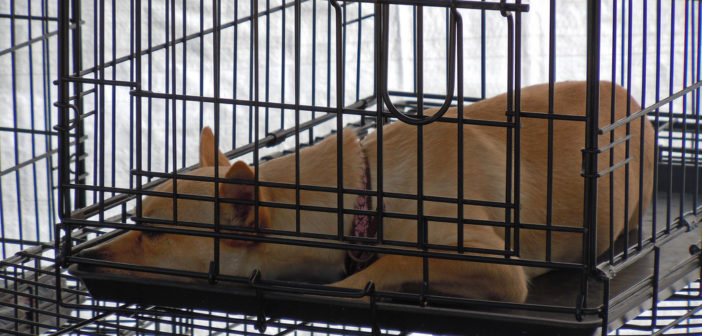Who or what exactly is an animal hoarder? Is it a case of do-gooders gone wrong? There has been plenty of research and scientific analysis of this pattern of behavior in recent years, including its classification as a mental disorder. Animal hoarding is currently considered a subtype of hoarding disorder, though some experts argue that specifically hoarding animals is distinct enough to be considered its own disorder.
As is probably the case with most animal welfare enforcement organizations, we have encountered animal hoarding more times than we’d like. In one investigation, a person was found living in abysmal conditions in a house with who knows how many animals, including cats, dogs, rabbits, caged birds and even monkeys. In another instance, a person in Cape Town, South Africa, took it upon herself to rescue rats and ended up with hundreds of rats in her property. Not only in her property, but also around it, under it, and near it. Eventually complaints from neighbors led to an intervention by the local council on health grounds. These were two classic cases of animal hoarding.
A basic definition is that an animal hoarder is a person who amasses or collects more animals than he or she can properly care for. Hoarders generally fail to recognize or refuse to acknowledge when the animals in their care start to become victims of neglect. Animal hoarders are sometimes referred to as “animal collectors” or “animal addicts.”
This doesn’t mean animal hoarders are bad people, but it does mean that they’ve lost control and perspective on their situation. Once, whilst I was on set as an Society for the Prevention of Cruelty to Animals (SPCA) ad was being filmed, a young man from the advertising agency came up to me and asked if I knew of a certain person. He waxed lyrical about how much she loved cats, adding how many she had at home and asking if I’d ever been to her property. When I asked if he thought this was excessive, his tone shifted and he began to tell me how the house smelt, that there were cats locked in every room, and so on. My “informant” was obviously sussing out my reaction before spilling the beans. He was referring to a kind, motivated person, but also someone who had taken their dedication to extremes.
Most people tend to think of hoarders as people motivated by a love of animals that eventually got out of control. This is often true, but it’s also more than that. The obvious main characteristic of a hoarder is the need to have many animals around. But studies indicate that hoarders are often intelligent, communicate well and have a shrewd ability to attract sympathy to themselves, no matter how neglected their animals might be. This is usually combined with a stubborn refusal to part with any of their animals, whether through adoption or euthanasia when recommended. There is often a stark contrast between the hoarder’s public persona and his or her private life. Reality is often denied; hoarders insist that all their animals are healthy and comfortable, including those confined for long periods in small cages or kennels.
A hoarding situation is arguably one of the most difficult that SPCA personnel have to face and deal with because those involved genuinely believe they are acting for the good of animals. There is a common perception that reverence for life is synonymous with preservation of life, regardless of quality. People who are effectively animal hoarders do tend to receive favorable publicity about the personal sacrifices they make on behalf of animals. In many cases they then become enamored with their own public image and would certainly not risk tarnishing it by relinquishing or euthanizing animals.
It’s a tricky situation for an SPCA to deal with, especially as the public image of private or organized hoarders is that they are saving animals. Most people do not understand that keeping animals alive in the environment that hoarders often provide inevitably leads to intolerable suffering. Compassion for hoarders is not misplaced if you recognize that most of them are in desperate need of psychological help. What hoarders do not need is the type of sympathy and support that enables them to continue harboring and acquiring even more animals.
Work to educate others about animal hoarding. If you come across a situation that smacks of animal hoarding, please let your local SPCA, or equivalent organization, know. It’s worth checking out for the sake of the animals. Whether it’s rural or in a built-up area, any property which appears to have far too many animals for their own comfort may be worth checking out. It may be one person with an excess of animals, too many to care for. It may be a situation that has grown out of control and become a back-yard or unlicensed animal shelter. Animals are not saved or rescued by being “warehoused” or kept in infernal living conditions. Quality of life is the issue. It’s what every animal deserves. Animal hoarding is a recognized disorder, and the more we know, the more we can do to help those affected by it.
Featured image: A dog in a stacked kennel, in this case at an adoption fair, not in the care of a hoarder. Image credit: Jeff Stvan, CC BY-SA 3.0.





